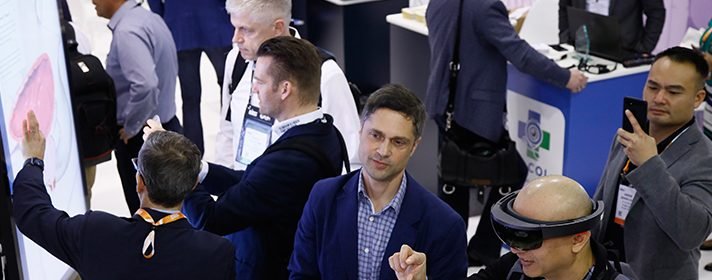HIMSS19: Top takeaways from the health IT show

I went to HIMSS19 last week, like a whole lot of other people. As Healthcare IT News is a HIMSS Media publication, we actually start covering the conference well in advance and this time around that meant a first article way back in August, believe it or not, about the new HIMSS Circles communities.
Fast forward to late Friday before the Global Conference and word got out that the Office of Management and Budget finished work on the eagerly-anticipated information blocking rule — thereby signaling the possibility that it would bring the new rule to Orlando.
And while the rule dominated the discourse from the opening panel to Friday morning keynotes, plenty more happened at the show.
Innovation and emerging technologies were all over the show floor, in fact, including artificial intelligence, blockchain, IoT and virtual reality wares.
Let’s take a look at the most important aspects of HIMSS19.
1. Health and Human Services dropped the long-awaited information blocking rule. HHS, along with CMS and ONC, delivered the proposed rule on Monday, which not only graced the cover of our first Show Daily but also set the stage for discussion during Tuesday’s opening keynote panel. That session featured CMS Administrator Seema Verma, HIMSS CEO Hal Wolf, as well as former feds Karen DeSalvo (national coordinator), Michael Leavitt (HHS Secretary) and Aneesh Chopra (US CTO). The overarching message from that group was that, particularly when it comes to FHIR and open APIs, the tide shifted and the private sector now needs to catch up to the government.
2. Speaking of FHIR … You’ve been hearing about its promise relative to interoperability for some time now but, beyond that, tech stalwarts such as IBM, Google and Microsoft are already viewing the specification as a gateway for AI and machine learning because it can be used as a foundational element when building tools that democratize data and AI. Quick status check on FHIR: In the weeks before HIMSS19, HL7 introduced FHIR 4, the first normative version and, in turn, offered a glimpse of what to expect of the forthcoming FHIR 5.
3. Doctor’s loathe their EHRs, right? Well, despite that being a sort of conventional wisdom, Epic Systems CEO Judy Faulkner countered the argument by saying that recent studies do not prove a correlation between EHRs and job dissatisfaction or burnout. Not everyone will agree but Faulkner said that KLAS research found “a lot of people who were satisfied with their job but didn’t like the EHR. A lot of people who weren’t satisfied with their job but did like (the EHR). And by far the smallest number was those who didn’t like both.” Healthcare IT News Editor Mike Miliard’s wide-ranging Q&A with Faulkner also delved into her drive to keep working like Warren Buffett and speculation that Apple should acquire Epic, which she regarded as laughable.
4. Emerging tech was everywhere. Exhibitors introduced new IoT tools, including sensors and wearables, some brought interoperability technologies, others showcased digital workspace and imaging wares, while telemedicine offerings were also on display. A number of cybersecurity products made their debut. Artificial intelligence gained traction, meanwhile, with health system Sutter unveiling AI tech of its own. And I cannot forget about blockchain for two reasons: the new blockchain products at HIMSS19, of course, as well as the question that arose about what’s really fueling the blockchain craze?
5. Premier CEO Susan DeVore, in her Friday morning keynote, delivered a clarion call. Healthcare as an industry has ‘a higher calling’ to fix our broken system — and she explained the five interrelated problems we need to solve to achieve success. “We have to do this,” DeVore said. “It’s the force that will give rise to the future we’re all working toward.”
I had to catch a flight before the closing session but my colleague Laura Lovett, Associate Editor at MobiHealthNews, was there and reported on the stories Not Impossible Labs founder Mick Ebeling shared about his inspiration in creating digital tools for helping an artist draw again, 3-D printed arms for Sudanese amputees, tech for helping people with hearing impairments experience music that also helps Parkinson’s patients steady their hand tremors.
Twitter: SullyHIT
Email the writer: [email protected]
Healthcare IT News is a HIMSS Media publication.
Source: Read Full Article